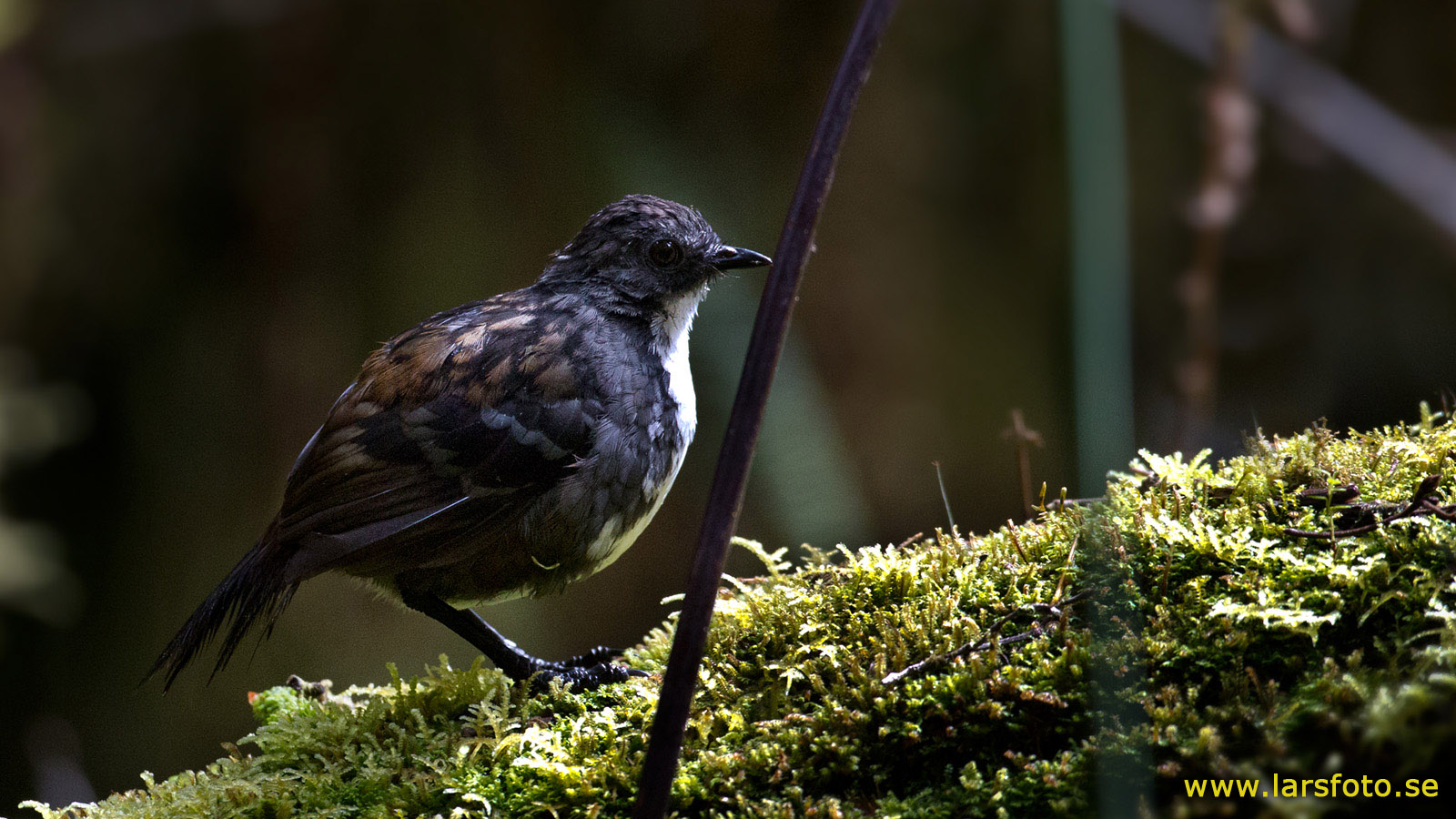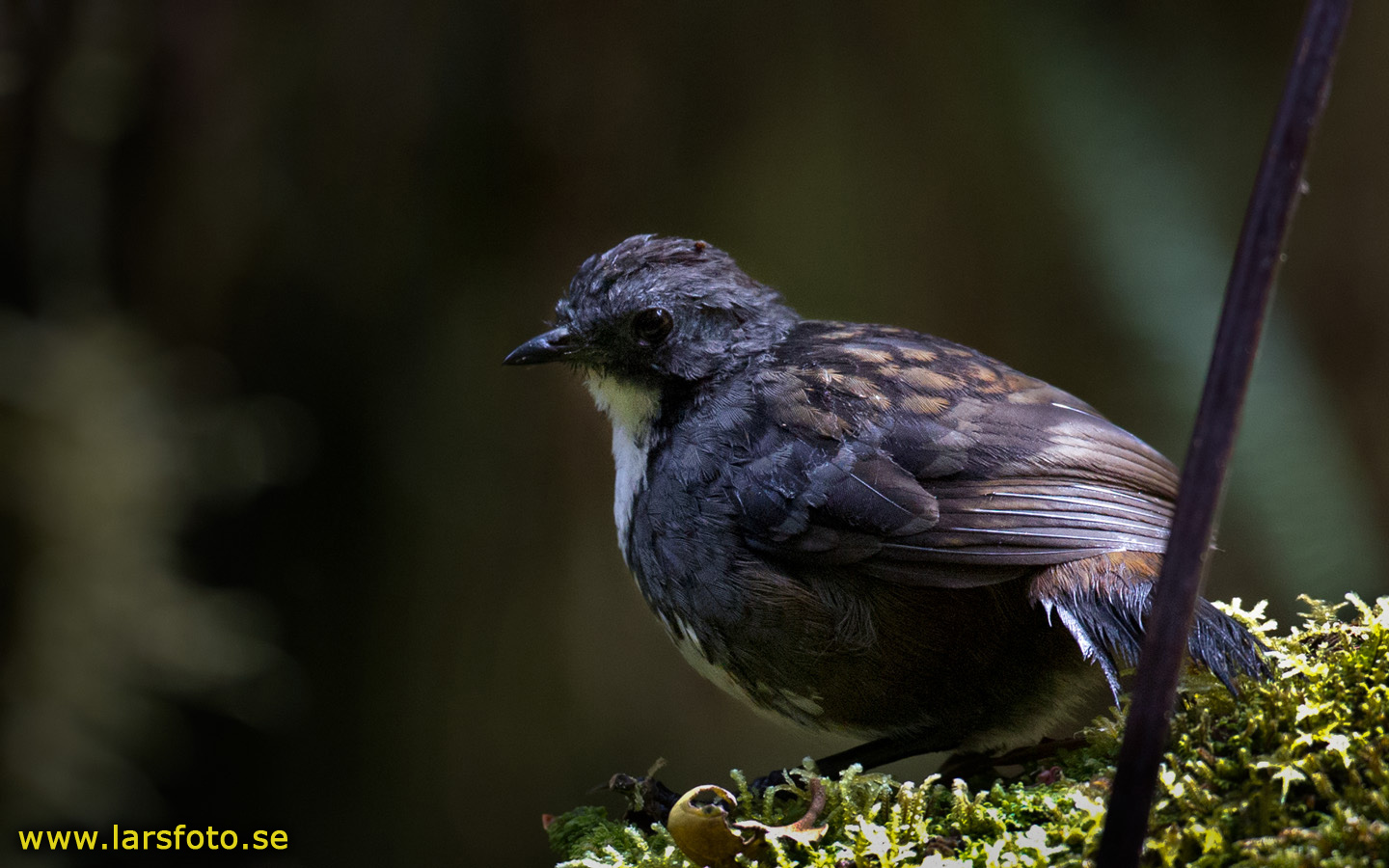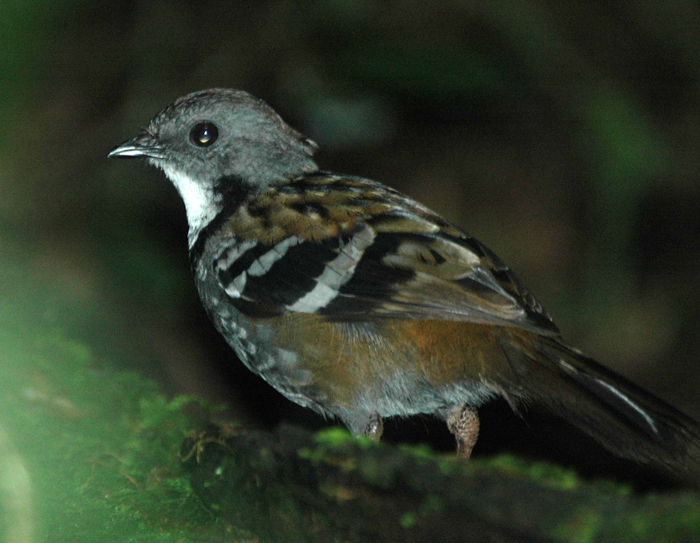
Orthonyx novaeguineae
TAXONOMY
Orthonyx novae guineae Meyer, 1874, Arfak Mountains, New
Guinea. Three subspecies.
OTHER COMMON NAMES
French: Orthonyx de Nouvelle Guinйe; German:
Neuguineaflцter; Spanish: Corretroncos de Nueva Guinea.
PHYSICAL
CHARACTERISTICS
7.3 in (18.5 cm); female
0.10–0.13 lb
(47–58 g), male
0.12–0.17 lb (53–75
g). Similar to southern
longrenner.
DISTRIBUTION
Scattered localities
in mountains of
New Guinea between
6,500–9,300 ft
(1,980–2,840 m),
probably up to 11,300 ft (3,450 m); occurs locally as low as
3,900 ft (1,200 m) in Irian Jaya. O. n. novaeguineae: northwestern
New Guinea; O. n. dorsalis: western central New Guinea;
O. n. victoriana: eastern New Guinea.
HABITAT
Mainly upper montane forest.
BEHAVIOR
Terrestrial. Quiet, cryptic, and easily overlooked. Usually seen
in pairs or small parties of three or four birds. Song is series of
four to six descending notes.
FEEDING ECOLOGY AND DIET
Scratches in ground litter for insects and other invertebrates.
REPRODUCTIVE BIOLOGY
The nest is a small dome of moss, root fibers, and plant stems,
about 5 in (12.5 cm) wide placed on the ground. Nests with a
single white egg found in March and November.
CONSERVATION STATUS
Generally scarce to rare, although not considered a threatened
species.
SIGNIFICANCE TO HUMANS
None known.
Other popular Animals
Photo Gallery of - New Guinea logrunner




 Animalia Life
Animalia Life